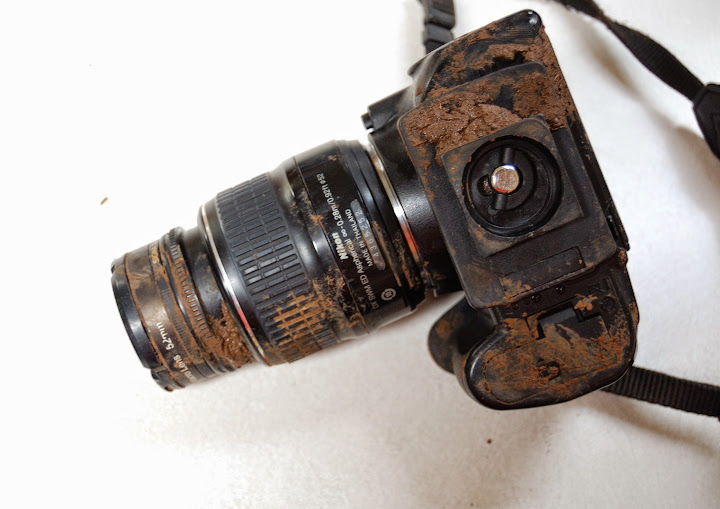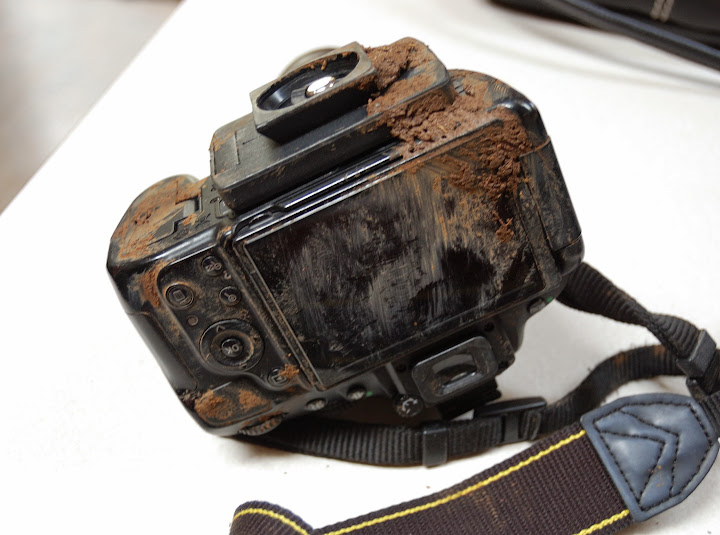My son and I were hiking today (beautiful wonderful hike!) and I slipped on some mud and landed in a lot of mud. I'm ok (sore and a strained, but not sprained, ankle). My camera looks like this:
My plan is to let it dry out all the way and take my vacuum to it. Hoping for the best. I think the good news is probably that most of the mud is on the lens (a cheap one and I have an identical one) and on the side and back, not on the top buttons. We'll see.
I'm open to other ideas as to how I should handle this, though, so that's why I'm posting.
Rach
Great plan!
But so sorry you had this fall!
You are on the right track. I would first remove as mud as missable with, yes, a damp towel, being careful to avoid jobs or junctions. All you are doing is debunking the mess. Use cotton q tips to get a little more from where the lens mounts to the body. You want that junction clean. Use moist q tips to gradually clean that area.
buy some silica crystals packages and then put the camera in a plastic bag with the bag squashed to get out the air and have sica pull out tge water.
After a day change the crystals and regenerate by slow drying in an open tray in a warm open oven overnight.
After a few changes the rest of the mud can be removed with a new dry stiff paint brush. Use a air spray to blow away the remnants.
Again use a moist towel and q tips to catch any remnants that are still sticking to the body.
To remove the lens, you are going to have the lens pointing to the ground. First, tape up the lens before temoving it from the camera so as not to have any hidden dirt from in between the rings on the lens be brushed into the camera body.
Blow out the mirror or sensor chamber with air and put on a body cap.
The chances are your camera will be perfect.
An advantage of a good Olympus is that folk can routinely go into the shower with them to wash of sea sand etc.
I have no idea what the Nikon seals are like. What body is it? Some are pretty effectively splash proof, but I only know to trust the Olympus.
Asher


